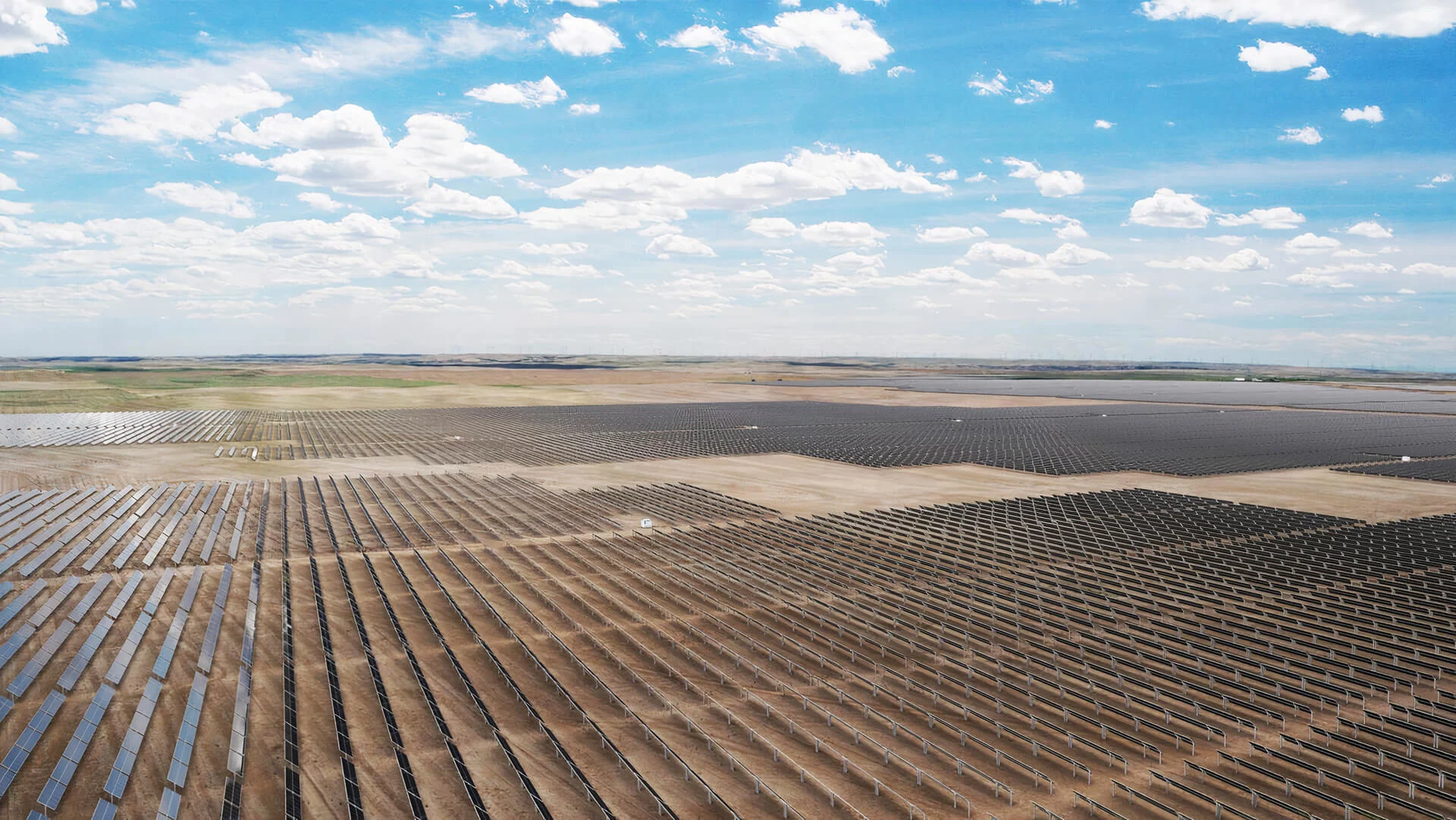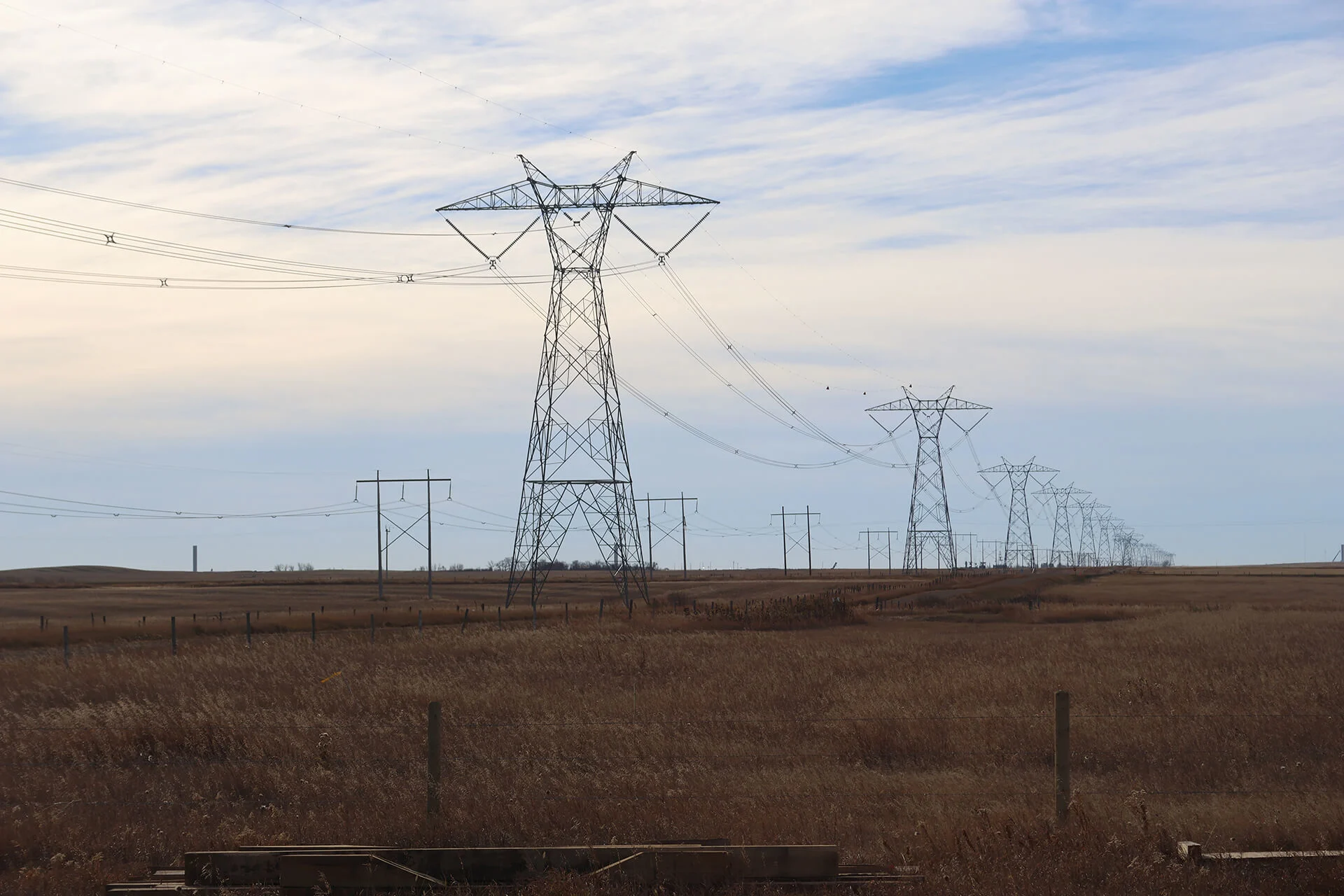
Alberta renewable energy surge could power 4,500 jobs
Unique market is attracting billions of dollars from companies looking for cheap clean energy, or carbon offsets.
The Narwhal and The Weather Network are working together to find new audiences for environmental journalism. Combining The Narwhal's in-depth reporting with The Weather Network's trusted national reach, the two organizations aim to bring more people into the conversation about the climate crisis by highlighting the most important issues and the possible solutions.
Alberta has seen a massive increase in corporate investment in renewable energy since 2019, and capacity from those deals is set to increase output by two gigawatts — enough to power roughly 1.5 million homes.
“Our analysis shows $3.7 billion worth of renewables construction by 2023 and 4,500 jobs,” said Nagwan Al-Guneid, the director of Business Renewables Centre Canada.
The centre is an initiative of the environmental think tank Pembina Institute and provides education and guidance for companies looking to invest in renewable energy or energy offsets across Canada. Its membership is made up of renewable energy companies.
The addition of two gigawatts is over two times the amount of renewable energy added to the grid between 2010 and 2017, according to the Canadian Energy Regulator.
“This is driven directly by what we call power purchase agreements,” Al-Guneid says. “We have companies from across the country coming to Alberta.”
So far this year, 191 megawatts of renewable energy will be added through purchase agreements, according to the Business Renewables Centre.
Alberta’s electricity system is unique in Canada — an open market where companies can ink deals directly with private power producers to buy a set amount of electricity produced each year, either for use or for offset credits.
The financial security provided by those contracts helps producers build out more renewable projects without market risks.

In 2020, Alberta generated 52% of Canada's total GHG emissions from power generation. (Rachel Maclean/The Weather Network)
Purchasers get cheap renewable energy or credits to meet internal or external emissions goals.
It differs from other provinces where there is a monopoly, often government-owned, on power supply.
In those provinces, investment in renewables largely depends on whether the company with the monopoly is in a buying mood, says Blake Shaffer, an economics professor at the University of Calgary who studies electricity markets.
That’s not the case in Alberta, where the only real regulatory hurdle is applying to connect a project to the grid.
“Once that’s approved, you can just go ahead and build it, and you can sell it,” Shaffer says.
That sort of flexibility has attracted some big investments, including two deals with Amazon in 2021 to purchase 455 megawatts worth of solar energy from Calgary-based Greengate Power. There are also big investments from oil companies looking to offset emissions.
The investments are allowing Alberta to decarbonize its grid, largely with the backing of the private sector.
Shaffer says Alberta is the “renewables capital in Canada.”
“That just shocks people because of course their association with Alberta is nothing about renewables, but oil and gas,” Shaffer says. “But it really is the investment centre for renewables in the entire country right now.”
Alberta has ‘embarrassing’ riches in wind energy and solar power
It’s not just the market that is driving Alberta’s renewables boom. According to Shaffer there are three other key factors: an embarrassment of wind and solar riches, the need to transition away from a traditionally dirty, coal-reliant grid and the current high costs of energy.
Shaffer says the strong and seemingly non-stop winds coming off the foothills of the Rockies in the southwest of the province mean each turbine produces more energy compared to other areas. The same is true for solar, with an abundance of sunny days.
“Southern Alberta and southern Saskatchewan have the best solar insolation,” he says. “You put a panel in Vancouver, or you put a panel in Medicine Hat, and you’re gonna get about 50 per cent more energy out of that panel in Medicine Hat, and they’re gonna cost you the same.”
The spark that set off the surge in investments wasn’t strictly an open-market mechanism. Under the previous NDP government, the province brought in a program that allowed private producers to compete for government contracts.
The government agreed to a certain price and the producers were then allowed to sell their electricity on the open market. If the price dropped below what was guaranteed, the province would pay the difference. If, however, the price was higher, the developers would pay the difference to the government.
The program was a success — Shaffer says the government made money off of it — and demonstrated just how cheap that electricity could be.
“This kicked off the surge of buyers seeking to purchase renewable energy because industry saw how good of a deal the government got for Albertans,” Al-Guneid says. “Once that was accomplished, the private sector picked up the ball and ran with it.”

Nagwan Al-Guneid, the director of Business Renewables Centre Canada, says corporate contracts with private energy developers are driving a surge in Alberta’s renewable energy capacity. (Business Renewables Centre Canada)
The current United Conservative government ended the program in 2019, but Shaffer says the void has been completely filled by the private sector. Emissions targets and carbon pricing are also driving companies to invest in renewables.
But the current surge in renewable investments doesn’t mean there aren’t challenges ahead, or a role for government intervention.
Success and targets bring challenges for Alberta’s renewable energy
Dan Balaban is the CEO of Greengate Power, a renewable energy company based in Calgary, and one of the founding members of Business Renewables Centre Canada. His company developed the biggest wind farm in Canada and is building the biggest solar farm — helped by that big contract from Amazon.
Balaban says supply chain issues that have wracked almost every part of the economy throughout the COVID-19 pandemic are affecting the renewable energy sector, too. He also says there has to be more investment — from government and the private sector — in both energy storage and transmission lines if renewables are to reach ambitious goals set by the federal government, including the target of a net-zero grid by 2035.
“The need to build out new transmission infrastructure has traditionally been a very complex and slow process, but if we’re going to keep up with all the demand that we have for renewables, and our needs to decarbonize our electricity system, we have to invest in our infrastructure as well,” Balaban says.
He says Alberta has more work ahead than other provinces in decarbonizing its grid, due to a traditional reliance on fossil fuels, particularly coal.
“The 2035 goal in particular is very ambitious,” Balaban says. “So it’s great that we have a goal, but we need to back up that goal with tangible support to get us there.”
Balaban wants to see better tax breaks for net-zero technologies and the introduction of tax breaks for renewables, at least on par with the 50 per cent that was offered for carbon capture and storage in the last federal budget.

Construction at TransAlta’s 130 MW Garden Plain wind farm, located near Hanna, Alta., was nearing completion in October 2022. Once it's up and running, its five 102.5-metre high towers will provide power for long-term contracts with companies like Pembina Pipeline. (Rachel Maclean/The Weather Network)
The Canadian Renewable Energy Association says achieving net-zero by 2050 will require Canada to build, on average, almost 5.5 gigawatts of wind and solar capacity every year.
“We’re nowhere near on track to do that,” Balaban says.
Government intervention will also be needed for big strategic decisions, including building those transmission lines and possibly some large-scale storage, according to Shaffer.
Some of that storage capacity will be needed to prevent a surge in renewables from destroying the financial incentive to build them. If solar generation increases dramatically, for example, and all those panels surge at the same time while the sun is at its brightest, that drives the price of the electricity down and makes it unprofitable. Storage would allow that energy to feed into the grid when needed, rather than all at once.
It’s part of a fine balance, where too much success can create its own bottlenecks. Al-Guneid, from Business Renewables Centre Canada, is concerned that too many projects coming in all at once could slow down regulatory approvals and impact the ability of companies to reach their targets on time.
Her organization, which helps with that process, has reduced the time it takes to approve an application from about four years to as little as a year, she says.
“So it’ll kind of be that sort of push and pull going forward, but right now, we’re definitely in that phase of just building, building, building,” Shaffer said.
“We’ll probably start to see some of that congestion and price depression creep in here. But the thing that renewables have going for them is, even as their value kind of diminishes the more they get built, they’re just so cheap right now relative to anything else, especially when you include their carbon costs.”
This article, written by Drew Anderson, was originally published for The Narwhal.
Thumbnail image: The Travers Solar Farm in southern Alberta is the largest of its kind in Canada and has a massive contract with Amazon that allows it to avoid market volatility. (Greengate Power)







